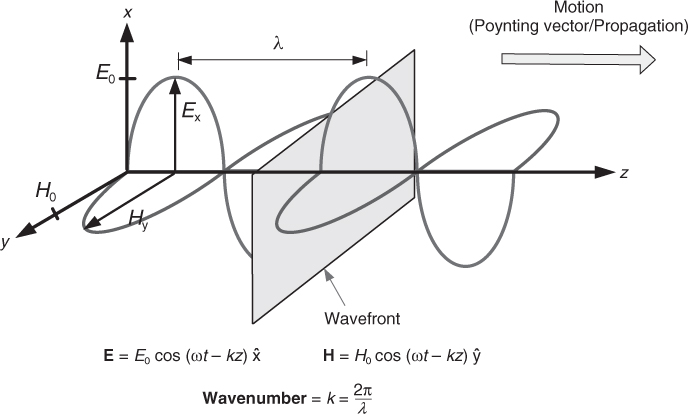Chapter 2
Fundamental Considerations for GNSS Antennas
This chapter starts by describing radio wave propagation between a satellite and a ground receiver and the rationale for selecting circularly polarised (CP) waves. It also introduces the relevant propagation issues, such as multipath interference and the effects of ionospheric, tropospheric and RF interference, and covers fundamental issues in antenna design for GNSS applications. Finally, it presents the basic approaches for designing a CP antenna and highlights the technical challenges involved.
2.1 GNSS Radio Wave Propagation
Satellite navigation relies on signals carried by electromagnetic (EM) waves (radio waves). In order to design better GNSS antennas, we need to have a good understanding of radio wave propagation and related effects on satellite navigation systems.
2.1.1 Plane Waves and Polarisation
A radio wave propagating over a long distance, as in a satellite navigation system, is always in the form of a plane wave. A plane EM wave is characterised by having no field components in the propagation direction and the field only varying in the propagation direction. A typical plane wave and its attributes are shown in Figure 2.1. The electric and magnetic fields are in phase and vary sinusoidally along the propagation direction.
Figure 2.1 Illustration of a plane EM wave.

The polarisation of a plane EM wave can be ...

